George Pavlidis
Locality enhanced dynamic biasing and sampling strategies for contextual ASR
Jan 23, 2024Abstract:Automatic Speech Recognition (ASR) still face challenges when recognizing time-variant rare-phrases. Contextual biasing (CB) modules bias ASR model towards such contextually-relevant phrases. During training, a list of biasing phrases are selected from a large pool of phrases following a sampling strategy. In this work we firstly analyse different sampling strategies to provide insights into the training of CB for ASR with correlation plots between the bias embeddings among various training stages. Secondly, we introduce a neighbourhood attention (NA) that localizes self attention (SA) to the nearest neighbouring frames to further refine the CB output. The results show that this proposed approach provides on average a 25.84% relative WER improvement on LibriSpeech sets and rare-word evaluation compared to the baseline.
Towards Explainability in Monocular Depth Estimation
Oct 25, 2023

Abstract:The estimation of depth in two-dimensional images has long been a challenging and extensively studied subject in computer vision. Recently, significant progress has been made with the emergence of Deep Learning-based approaches, which have proven highly successful. This paper focuses on the explainability in monocular depth estimation methods, in terms of how humans perceive depth. This preliminary study emphasizes on one of the most significant visual cues, the relative size, which is prominent in almost all viewed images. We designed a specific experiment to mimic the experiments in humans and have tested state-of-the-art methods to indirectly assess the explainability in the context defined. In addition, we observed that measuring the accuracy required further attention and a particular approach is proposed to this end. The results show that a mean accuracy of around 77% across methods is achieved, with some of the methods performing markedly better, thus, indirectly revealing their corresponding potential to uncover monocular depth cues, like relative size.
Deep learning based black spot identification on Greek road networks
Jun 19, 2023



Abstract:Black spot identification, a spatiotemporal phenomenon, involves analyzing the geographical location and time-based occurrence of road accidents. Typically, this analysis examines specific locations on road networks during set time periods to pinpoint areas with a higher concentration of accidents, known as black spots. By evaluating these problem areas, researchers can uncover the underlying causes and reasons for increased collision rates, such as road design, traffic volume, driver behavior, weather, and infrastructure. However, challenges in identifying black spots include limited data availability, data quality, and assessing contributing factors. Additionally, evolving road design, infrastructure, and vehicle safety technology can affect black spot analysis and determination. This study focused on traffic accidents in Greek road networks to recognize black spots, utilizing data from police and government-issued car crash reports. The study produced a publicly available dataset called Black Spots of North Greece (BSNG) and a highly accurate identification method.
Defect detection using weakly supervised learning
Mar 27, 2023


Abstract:In many real-world scenarios, obtaining large amounts of labeled data can be a daunting task. Weakly supervised learning techniques have gained significant attention in recent years as an alternative to traditional supervised learning, as they enable training models using only a limited amount of labeled data. In this paper, the performance of a weakly supervised classifier to its fully supervised counterpart is compared on the task of defect detection. Experiments are conducted on a dataset of images containing defects, and evaluate the two classifiers based on their accuracy, precision, and recall. Our results show that the weakly supervised classifier achieves comparable performance to the supervised classifier, while requiring significantly less labeled data.
Dens-PU: PU Learning with Density-Based Positive Labeled Augmentation
Mar 21, 2023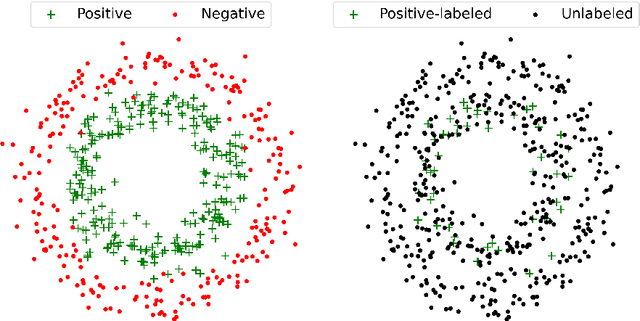

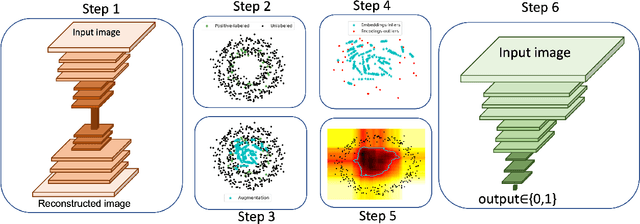
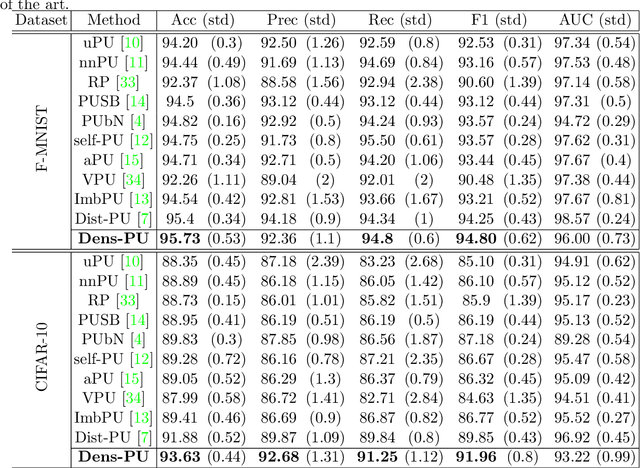
Abstract:This study proposes a novel approach for solving the PU learning problem based on an anomaly-detection strategy. Latent encodings extracted from positive-labeled data are linearly combined to acquire new samples. These new samples are used as embeddings to increase the density of positive-labeled data and, thus, define a boundary that approximates the positive class. The further a sample is from the boundary the more it is considered as a negative sample. Once a set of negative samples is obtained, the PU learning problem reduces to binary classification. The approach, named Dens-PU due to its reliance on the density of positive-labeled data, was evaluated using benchmark image datasets, and state-of-the-art results were attained.
UniMorph 4.0: Universal Morphology
May 10, 2022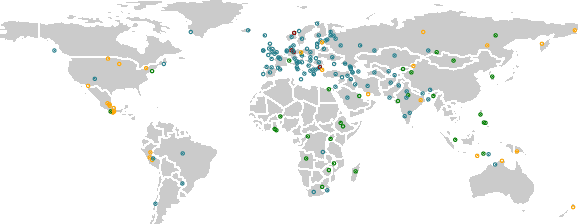

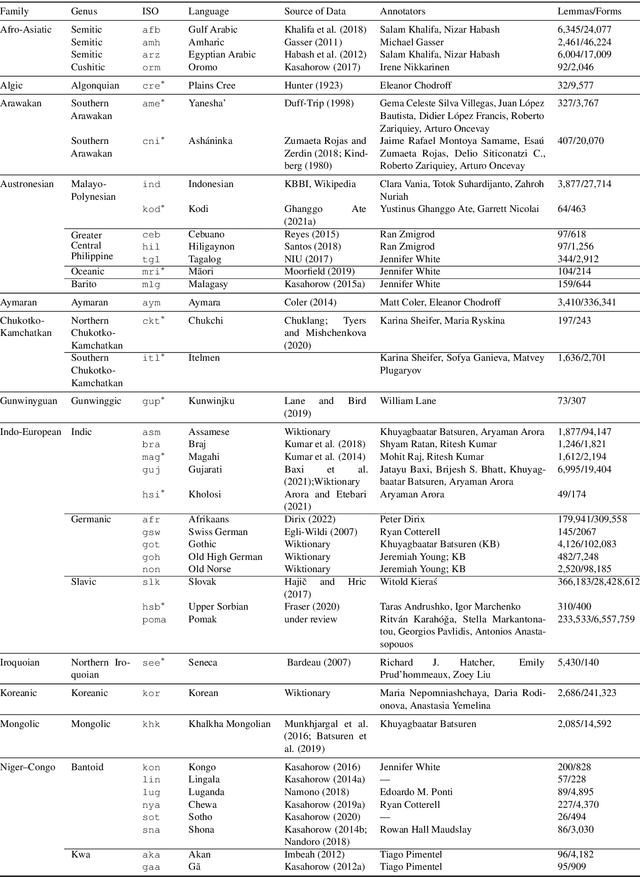
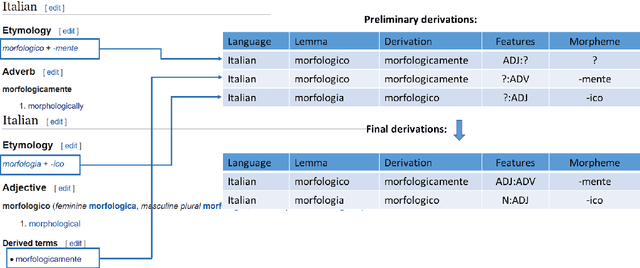
Abstract:The Universal Morphology (UniMorph) project is a collaborative effort providing broad-coverage instantiated normalized morphological inflection tables for hundreds of diverse world languages. The project comprises two major thrusts: a language-independent feature schema for rich morphological annotation and a type-level resource of annotated data in diverse languages realizing that schema. This paper presents the expansions and improvements made on several fronts over the last couple of years (since McCarthy et al. (2020)). Collaborative efforts by numerous linguists have added 67 new languages, including 30 endangered languages. We have implemented several improvements to the extraction pipeline to tackle some issues, e.g. missing gender and macron information. We have also amended the schema to use a hierarchical structure that is needed for morphological phenomena like multiple-argument agreement and case stacking, while adding some missing morphological features to make the schema more inclusive. In light of the last UniMorph release, we also augmented the database with morpheme segmentation for 16 languages. Lastly, this new release makes a push towards inclusion of derivational morphology in UniMorph by enriching the data and annotation schema with instances representing derivational processes from MorphyNet.
Deep learning approaches in food recognition
Apr 08, 2020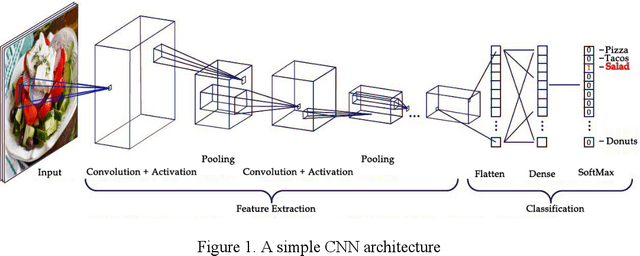



Abstract:Automatic image-based food recognition is a particularly challenging task. Traditional image analysis approaches have achieved low classification accuracy in the past, whereas deep learning approaches enabled the identification of food types and their ingredients. The contents of food dishes are typically deformable objects, usually including complex semantics, which makes the task of defining their structure very difficult. Deep learning methods have already shown very promising results in such challenges, so this chapter focuses on the presentation of some popular approaches and techniques applied in image-based food recognition. The three main lines of solutions, namely the design from scratch, the transfer learning and the platform-based approaches, are outlined, particularly for the task at hand, and are tested and compared to reveal the inherent strengths and weaknesses. The chapter is complemented with basic background material, a section devoted to the relevant datasets that are crucial in light of the empirical approaches adopted, and some concluding remarks that underline the future directions.
 Add to Chrome
Add to Chrome Add to Firefox
Add to Firefox Add to Edge
Add to Edge